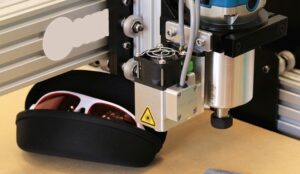
In recent decades, China has emerged as a powerhouse in global manufacturing, with CNC (Computer Numerical Control) machining playing a central role in this transformation. CNC machining, a method that uses computer-controlled tools to produce highly precise and complex components, has revolutionized the manufacturing sector. As industries across the globe seek more efficient and cost-effective production solutions, China’s dominance in CNC machining has become increasingly apparent. This article provides an overview of the rise of CNC machining in China, exploring the factors behind its growth and the implications for the global manufacturing landscape.
1. The Evolution of CNC Machining in China
a. Early Beginnings
The journey of CNC machining in China began in the late 20th century when the country started integrating advanced manufacturing technologies into its industrial base. Initially, China relied on imported CNC machines and technology from developed countries. However, as the Chinese manufacturing sector expanded, so did its focus on developing domestic capabilities.
b. Rapid Technological Advancements
Over the years, China has made significant strides in CNC machining technology. The country has invested heavily in research and development, leading to advancements in CNC machine capabilities, precision, and efficiency. Chinese manufacturers now produce a wide range of CNC machines, including 3-axis, 4-axis, and 5-axis systems, capable of handling various materials and complex designs.
2. Factors Driving the Rise of CNC Machining in China
a. Economic Growth and Industrialization
China’s rapid economic growth and industrialization have been crucial drivers behind the rise of CNC machining. As the country’s economy expanded, so did its manufacturing sector, which needed more advanced and efficient production methods. CNC machining provided the precision and scalability required to meet the growing demands of industries such as automotive, aerospace, electronics, and medical devices.
b. Government Support and Investment
The Chinese government has played a pivotal role in promoting the growth of CNC machining. Policies and initiatives aimed at advancing industrial technology and supporting innovation have contributed to the sector’s development. Government-backed programs, such as the “Made in China 2025” plan, focus on upgrading manufacturing capabilities and fostering high-tech industries, including CNC machining.
c. Global Demand for High-Precision Parts
The global demand for high-precision and complex components has driven many companies to seek CNC machining solutions. As industries such as aerospace and medical devices require parts with stringent tolerances and intricate designs, CNC machining offers the necessary accuracy and efficiency. China’s ability to provide these solutions at competitive prices has solidified its position as a leading player in the global CNC machining market.
3. Technological Advancements and Innovation
a. Integration of Industry 4.0
The rise of CNC machining in China is closely tied to the integration of Industry 4.0 principles. Industry 4.0 involves the use of smart technologies, such as the Internet of Things (IoT), artificial intelligence (AI), and big data, to optimize manufacturing processes. Chinese CNC machining facilities have adopted these technologies to enhance automation, monitor machine performance, and improve overall efficiency.
b. Enhanced Machine Capabilities
Chinese manufacturers have made significant investments in improving CNC machine capabilities. Modern CNC machines in China are equipped with advanced features, such as high-speed spindles, multi-axis configurations, and precision tooling. These enhancements enable manufacturers to produce a broader range of parts with greater complexity and accuracy.
c. Hybrid Manufacturing Technologies
China is also at the forefront of exploring hybrid manufacturing technologies that combine traditional CNC machining with additive manufacturing (3D printing). Hybrid technologies offer the ability to create complex geometries and customized components more efficiently. This innovation positions China as a leader in cutting-edge manufacturing solutions.

4. Advantages of CNC Machining in China
a. Cost Efficiency
One of the primary advantages of CNC machining in China is cost efficiency. Lower labor costs, coupled with advancements in technology, allow Chinese manufacturers to offer competitive pricing for CNC machining services. This cost advantage makes China an attractive option for businesses looking to reduce production expenses while maintaining high-quality standards.
b. Scalability and Flexibility
China’s CNC machining industry is equipped to handle both small-batch and large-scale production runs. The flexibility of CNC machines allows manufacturers to accommodate various production volumes and customize parts to meet specific requirements. This scalability is particularly valuable for industries with fluctuating demands and diverse product lines.
c. High Precision and Quality
Chinese CNC machining manufacturers are renowned for their precision and quality. The use of advanced machines, stringent quality control measures, and skilled technicians ensures that parts meet the required specifications and tolerances. This commitment to quality has earned China a reputation for delivering reliable and high-performance components.
5. Challenges and Considerations
a. Intellectual Property Protection
As CNC machining in China grows, concerns about intellectual property (IP) protection have arisen. Businesses partnering with Chinese manufacturers must take steps to safeguard their designs and proprietary information. Non-disclosure agreements (NDAs) and robust IP protection measures are essential to mitigate risks associated with IP theft or misuse.
b. Supply Chain Management
Managing supply chains can be challenging when working with international manufacturers. Factors such as lead times, shipping logistics, and customs regulations must be carefully managed to ensure timely delivery of parts. Effective communication and collaboration with Chinese CNC machining partners are crucial for successful supply chain management.
c. Quality Assurance and Compliance
Ensuring consistent quality and compliance with industry standards is a priority for businesses working with CNC machining manufacturers in China. It is important to verify that manufacturers adhere to relevant certifications and quality control practices. Regular audits and inspections can help maintain high standards and address any issues that arise.
6. The Future of CNC Machining in China
a. Continued Innovation
The future of CNC machining in China is likely to be marked by continued innovation and technological advancements. As the industry evolves, Chinese manufacturers will focus on further enhancing machine capabilities, adopting emerging technologies, and expanding their service offerings. Innovations such as smart manufacturing and advanced materials will shape the next generation of CNC machining.
b. Expansion into New Markets
China’s CNC machining industry is expected to expand into new markets and applications. Emerging industries, such as renewable energy and advanced robotics, will drive demand for specialized CNC machining solutions. Chinese manufacturers will continue to explore opportunities in these sectors, further solidifying their global presence.
c. Sustainability and Green Manufacturing
Sustainability will become an increasingly important factor in CNC machining. Chinese manufacturers are likely to adopt greener practices, such as energy-efficient machinery and waste reduction initiatives. Embracing sustainable manufacturing practices will enhance China’s reputation as a responsible and forward-thinking manufacturing hub.
Conclusion
The rise of CNC machining in China has transformed the global manufacturing landscape, positioning the country as a leader in precision machining technology. Factors such as economic growth, government support, technological advancements, and cost efficiency have contributed to China’s prominence in this field. While challenges such as intellectual property protection and supply chain management must be addressed, the future of CNC machining in China looks promising.
As businesses seek reliable and innovative manufacturing solutions, partnering with CNC machining providers in China offers significant advantages. By leveraging China’s advanced technology, skilled workforce, and competitive pricing, companies can achieve high-quality production outcomes and drive success in the global market.